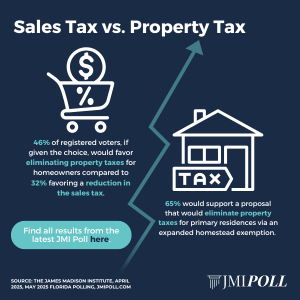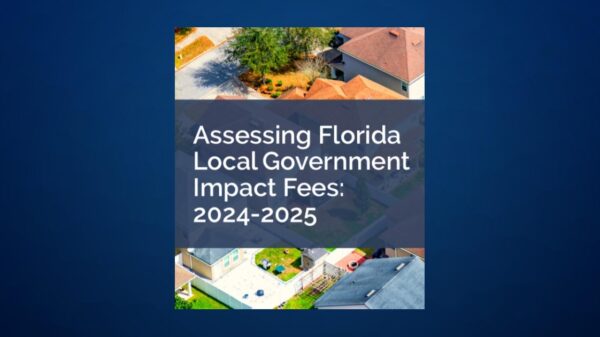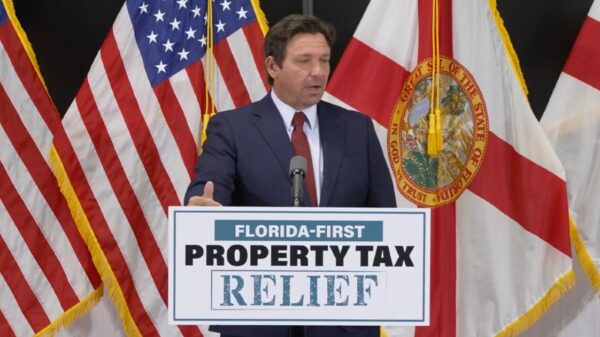By Doug Wheeler
Over the past several years, Florida’s property insurance market has teetered on the brink of collapse. Premiums soared, insurers left the state, Citizens was well beyond its intended size, and homeowners were left grappling with ever-rising costs and fewer options. The situation was untenable, and something had to give. Florida lawmakers responded with a series of reforms over the last few years aimed at stabilizing the market and recent data indicates that progress is being made.
As of today, according to the latest report from The James Madison Institute (JMI), there are signs that the market is stabilizing despite a pair of active hurricane seasons. Since 2023, more than 25 new insurers have entered the market, attracted by the reforms that have restored some semblance of market predictability and an improved litigation environment. Capital investment is on the rise, insurance rates have stabilized (and even decreased in some cases), and according to their December Press release, Citizens has successfully offloaded more than 400,000 policies to private insurers over the last year, a major step in reducing the state’s exposure. Additionally, according to the Florida Office of Insurance Regulation, litigation is on the decline, as a recent announcement touted that lawsuit filings against insurers are down 23% this year and are back to pre-2018 levels. Despite these positive developments, consumers are still feeling the sting of rates far above those in comparable states and insecurity as it relates to the availability of coverage following costly hurricane strikes.
As a newly-elected legislature convenes for the 2025 regular legislative session, it will undoubtedly face pressure to do more to address the justified concerns of Florida consumers. Lawmakers should certainly take their constituents’ concerns to heart but also be clear about where things stand today as opposed to a couple of years ago when insurance rates were dramatically increasing, competition was decreasing, and losses due to uncontrolled litigation were fleecing the industry and triggering downgrades and insolvencies.
This shift is not the result of a single action, but rather a multifaceted approach that has sought to address the root causes of Florida’s insurance crisis, as JMI has outlined in previous policy reports – rampant litigation abuse, fraud, and an unsustainable reinsurance market.
The most significant change has been the overhaul of Florida’s legal framework governing property insurance claims. Lawsuits, particularly those related to roof damage claims, had become a major cost driver, leading to higher premiums and insurer insolvencies. The reforms targeted the so-called “assignment of benefits” (AOB) scheme, which allowed contractors to bypass homeowners and take legal action directly against insurers. This practice incentivized frivolous lawsuits and skyrocketed the cost of claims. By limiting AOB abuse, Florida has curtailed some of the most egregious legal practices, thereby reducing litigation costs and increasing insurer confidence in the market.
Additionally, reforms have aimed at bolstering the reinsurance market, which has traditionally been a key factor in the availability and affordability of property insurance in the state. This includes creation of the Reinsurance to Assist Policyholders and the Florida Optional Reinsurance Assistance programs, giving insurers more capacity to absorb large-scale losses from major storms without having to raise premiums across the board. These moves have helped to stabilize the market and prevent the kind of mass exodus that has plagued Florida in recent years.
The effects of these reforms are already being felt. Several major insurers, including some that had previously pulled back or exited the market entirely, have started to return to Florida, signaling a shift toward greater competition. JMI’s December report found market conditions more favorable for consumers than they have been in years. While premium reductions may not be dramatic, the trend is positive, and the market’s overall stability is improving.
Yet, the path to full recovery is not without its challenges. While progress is evident, it is important to recognize that the reforms are still in their early stages. The insurance market is inherently volatile, especially in a state as prone to natural disasters as Florida. Drastic changes to the reform package could destabilize the fragile progress that has been made, and this is not the time for policymakers to embrace the political expediency of undoing reforms that have only begun to take hold. Immediate, large-scale premium reductions are not realistic. This problem was 20 years in the making and no solutions will fix it overnight. The reforms need time to fully materialize, and the market needs time to adjust to the new dynamics at play.
Florida’s property insurance market is on the right path, but this recovery is still a work in progress. The reforms introduced over the past few years have laid a solid foundation for a more sustainable and competitive market. But as JMI’s report demonstrates, challenges remain, and it is critical that we allow these reforms the time and space to take full effect. Let’s not forget that right before the 2023 reforms were signed into law, trial lawyers filed more than 280,000 lawsuits and those are still working their way through the legal system. Prematurely undoing the changes could jeopardize the hard-won stability that Floridians are beginning to enjoy. Policymakers must resist the temptation to abandon course and instead focus on refining and building upon the progress already made. Patience, tempered with thoughtful adjustments, is the key to securing a more stable and affordable future for Florida’s property insurance market.
Doug Wheeler is the Director of the George Gibbs Center for Economic Prosperity at the James Madison Institute.



















